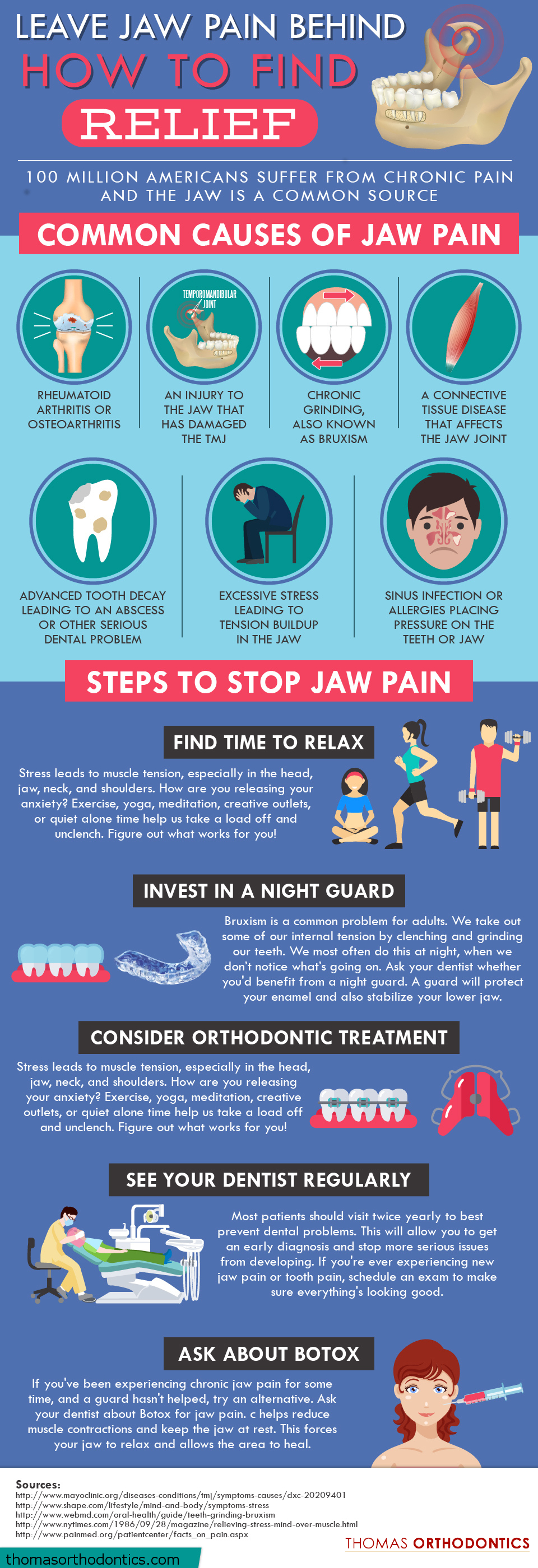Straightening teeth has a variety of health benefits, depending on the patient. Those with crowded teeth find that it’s easier to clean their teeth, and that plaque is less likely to build up after orthodontics. And those with more severe malocclusion find that it’s far easier to fit their teeth together. This straightening has both immediate and long-term advantages. By attaining properly aligned bites, patients get the best possible chance of avoiding TMJ pain or a TMJ disorder.
Jaw pain occurs when the jaw joint is either damaged or overworked. While jaw damage is less common, overactive jaw muscles are a frequent problem. The jaw is often an area of the body where stress manifests. This leads to clenching and grinding, typically while the patient is asleep and unaware. Long-term grinding can lead to pain throughout the face and head, from jaw pain to headaches to ear pain.
Whether you’re interested in orthodontic treatment to treat existing pain or hoping to prevent it in the future, we can help. Get in touch today to learn more.
Common Causes of TMJ Pain

Finding TMJ Relief
While we mention a few simple ways to soothe the jaw joint in the infographic above, it comes down to finding what works for you. Each patient is unique. Not only do your teeth fit together differently, but your daily habits have an impact on your likelihood of grinding or clenching your jaw. If you’re struggling to figure out what could be causing your discomfort or jaw dysfunction, schedule a consultation to meet with an expert.
Jaw pain can take hold slowly and become a regular part of your life. Don’t allow it to gain a foothold and affect your work, sleep and daily attitude.





